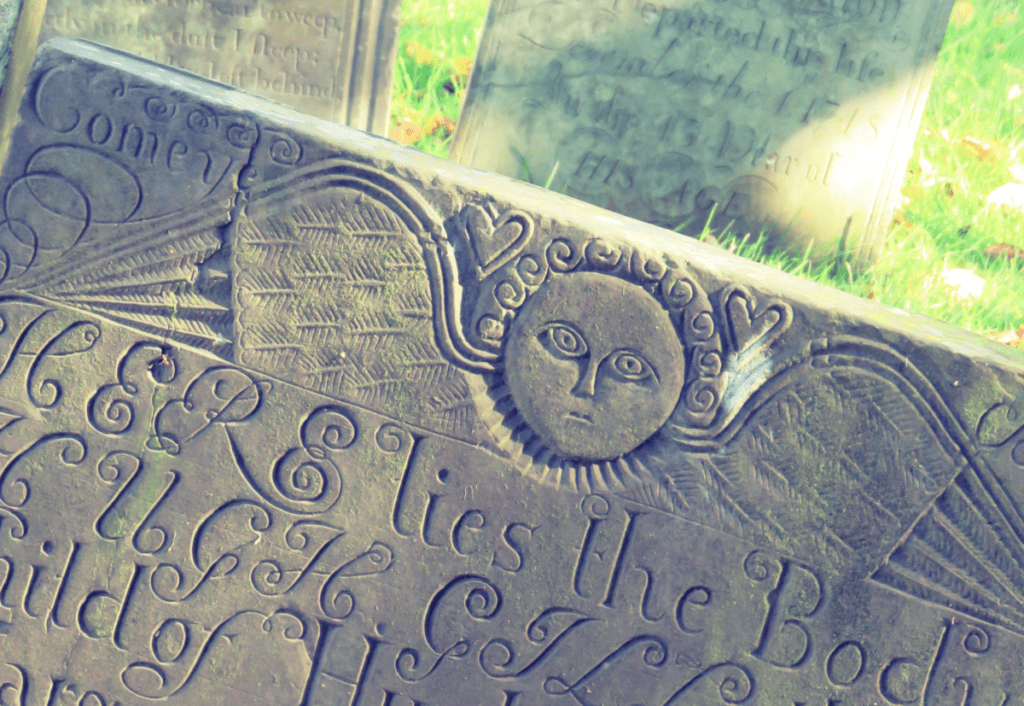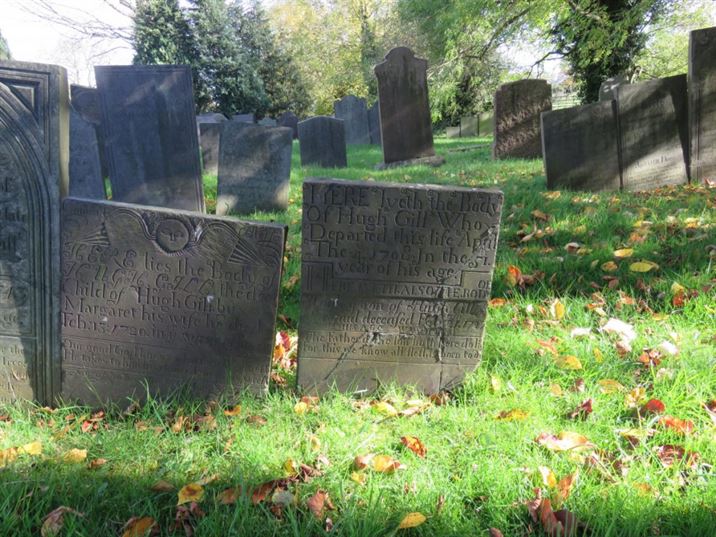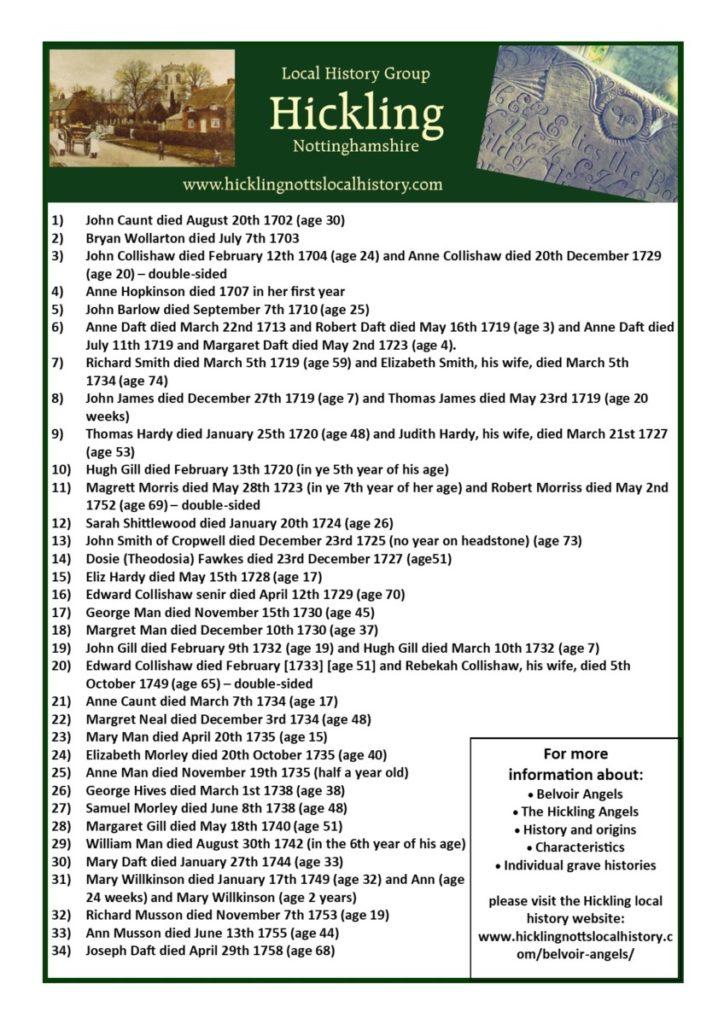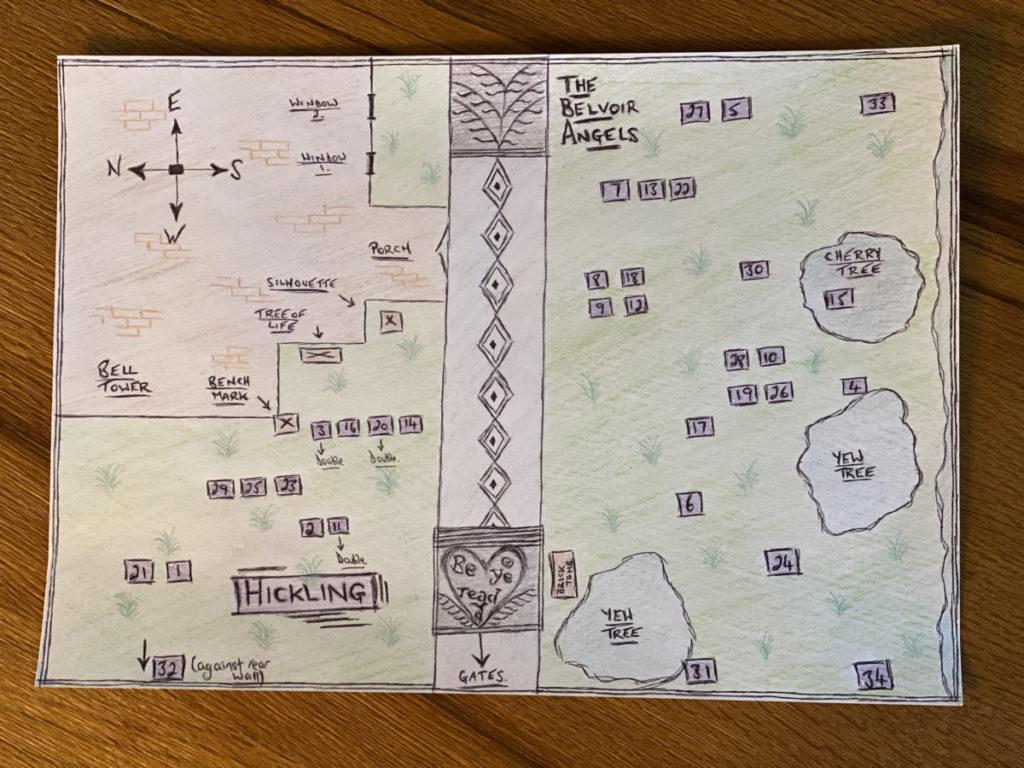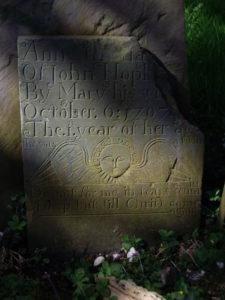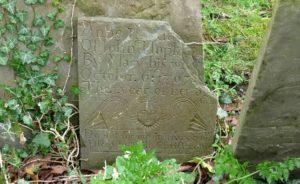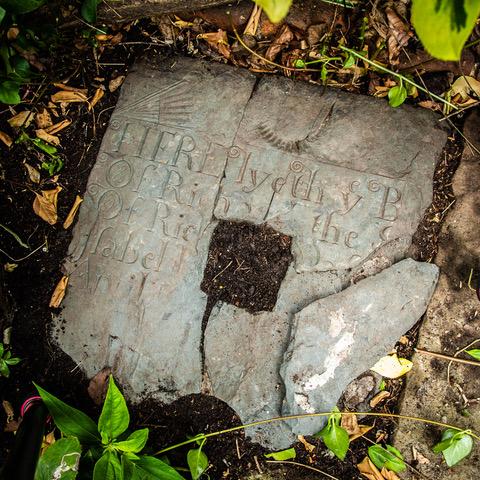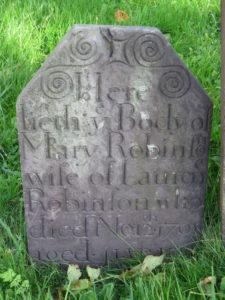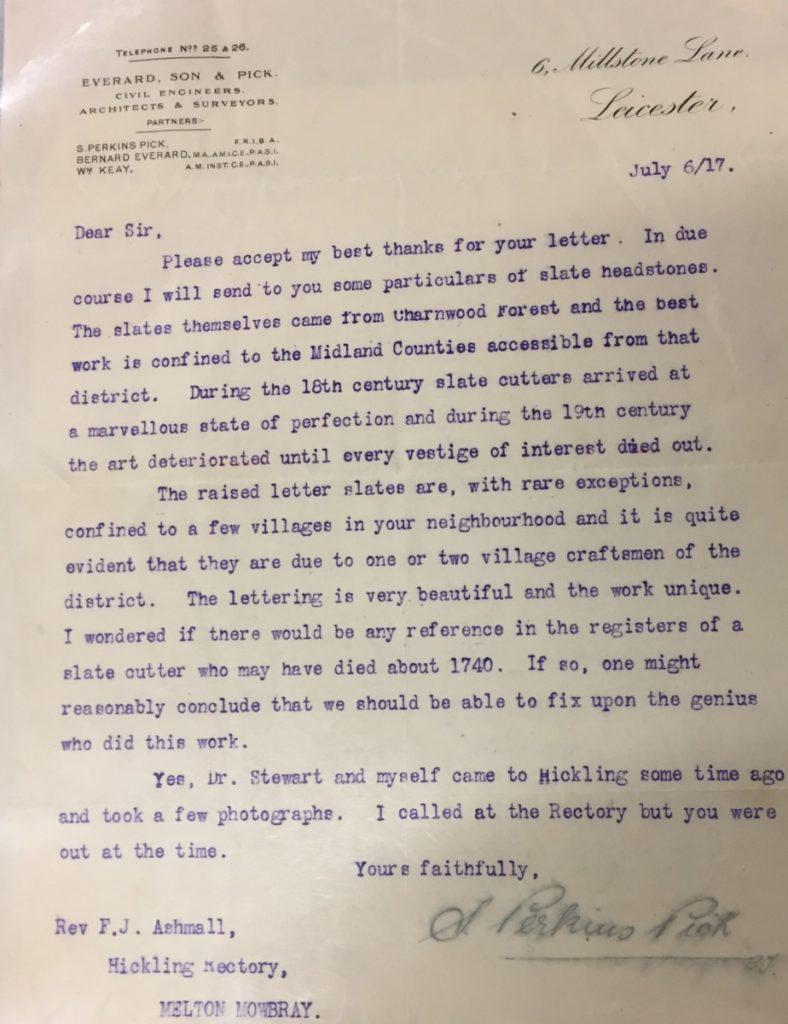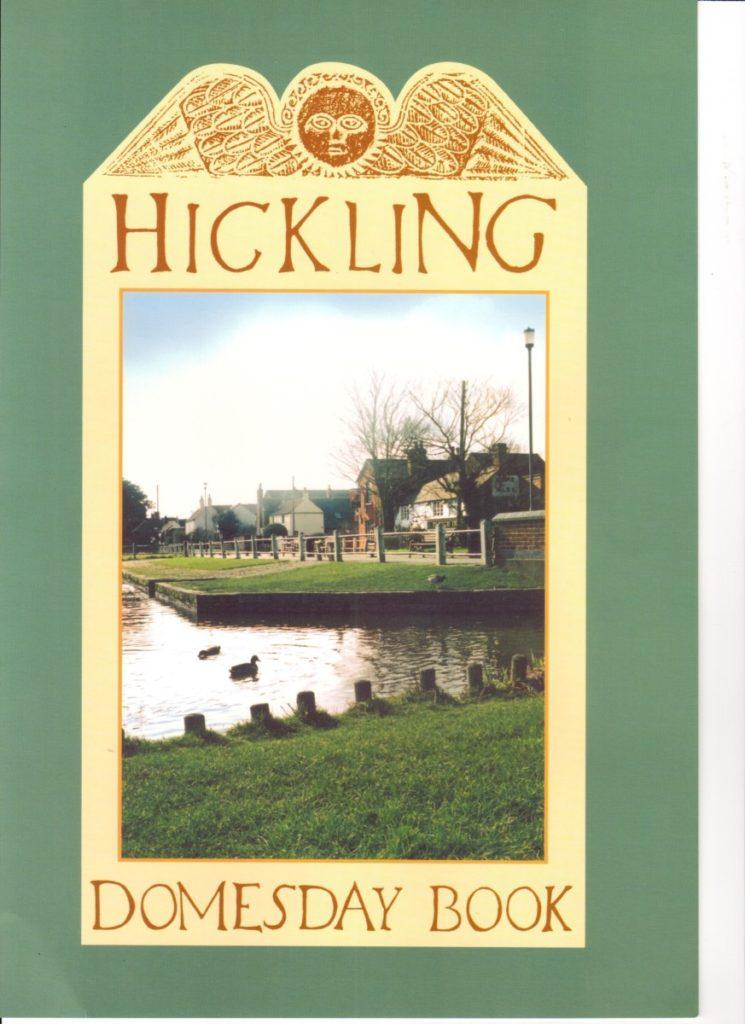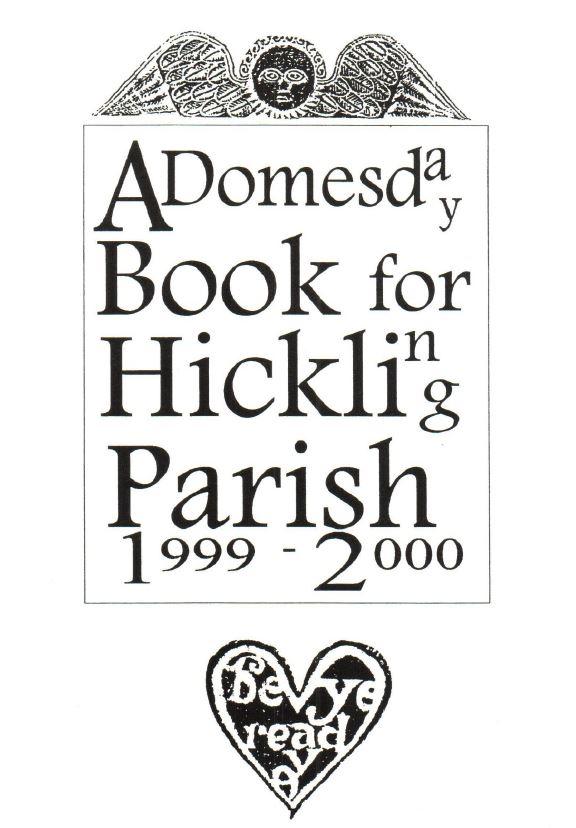“He shall give his angels charge over thee, to keep thee in all thy ways”
(from Psalm 91 & the dedication in Heathcote’s Vale of Belvoir Angels)
Hickling is one of the three villages where the densest clusters of Belvoir Angel headstones occur: Hickling, Nether Broughton and Upper Broughton. Between them, these villages account for 92 of the known examples (out of a known total of 328) – the villages sit in a triangle on the edge of the Vale of Belvoir with both of the Broughtons just a couple of miles from Hickling and less than a mile from each other.
It is very likely that several (and possibly many) Belvoir Angel headstones haven’t survived the last 300 years; it is certain that some have been damaged and that a few may have been moved. Sadly, since the graveyard census project began in Hickling some 20 years ago, the stones have deteriorated badly – the modern pressures of acid rain and pollution are achieving what 250 years hadn’t.
Heathcote records the earliest example of a Belvoir Angel in Melton Mowbray in 1681 and the earliest Vale of Belvoir example in 1690; the latest is found in Old Dalby in 1759. The surviving headstones in Hickling range from 1702 to 1758; 34 headstones have survived. What we don’t know is how many may have been lost; there were 820 burials recorded in the Hickling Parish Registers between 1690 and 1760! At present there are only (approx.) 350 memorial headstones in the churchyard.
- Please contact us if you find a reference or description to a headstone not included in our current list.
- Please also contact us if you can add any further detail or information to any of our records.
- If you would like to share your photographs, paintings or artwork of the Hickling Belvoir Angel headstones, please contact us with your images and details of how you would like your credits to appear.
- Thank you!
Most of the Hickling Belvoir Angels are protected by a Grade II Listing with English Heritage (6 are not) and they can mostly be found in clusters around the south porch of St. Luke’s Parish Church.
The Hickling Belvoir Angel Headstones:
There are 34 surviving Belvoir Angel headstones in the churchyard of St. Luke’s, Hickling; 3 of these are double-sided (listed in date order, oldest first):
(Pages not yet live – please look out for new links as they appear, above) Each of the headstone entries (above) will link to its own page which, as far as possible, includes the inscription, photographs and information about the individual and their family.
Sketch Plan of the Hickling Belvoir Angel Headstones (not to scale):
Click here for a printable pdf of the map and information sheet (copies are also available in the porch of St. Luke’s Church).
The sketched plan (above) is numbered chronologically and it is noticeable that there is no pattern to the surviving headstones in terms of time/dates (although there are some identifiable family clusters).
(April 2022) Until now, we had been working on the basis of 33 surviving Belvoir Angel headstones in Hickling. We now know that there are 34. With the help of Ann Schmidt, her database and the English Heritage listings the headstone for Anne Hopkinson who ‘died in her first year’ has been found again and added to the Hickling list.
“To Anne daughter of John Hopk[…] by Mary his wife d. 1707 in her first year she was a twin Do not for me in tears remain I sleep but till Christ come again”
The Cobblestones Angel:
The owners of Cobblestones recently explained their find: “(We) currently live at Cobblestones and the gravestone is in the front garden. It is about a third of the original, and has been cut into, probably to be used to support a post as there is a square taken out of the centre. We found it when we were clearing the back garden, over thirty years ago (…) There is, apparently, an important link between John Wright and the production of these angels. John Wright was the first person to own our house in 1797, so that could also be of interest, although he must be the grandson etc. of the masons who cut these gravestones.”
All the right characteristics but no Angels:
We have a small number of headstones which have all the characteristics of a Belvoir Angel headstone but without any angels. We don’t have any real explanation for this but they are all smaller and lower than those with Angel carvings and they are often clustered amongst the Belvoir Angel headstones:
- The Belvoir Angels represent a distinctive type of naive art which emerged out of the traditions of the 1600s. The headstones without the elaborate carving may simply be the fore-runners of the Belvoir Angels with some crossing over in time.
- They may be a style-choice or perhaps lettering without imagery was cheaper?
- It is understood that Belvoir Angel headstones were often damaged and even removed by puritanical folk who disapproved of the imagery and symbolism; perhaps the Angel headers were removed from some of these stones? Some do show slightly rough edges on the tops and even parts of patterning slightly cut off. The grave of Mary Robinson is an odd shape which may indicate angels have been removed from the top corners. However, because of the rough hewn characteristic of the Belvoir Angel stones, it is impossible to be sure.
Swithland Slate Roof.

Swithland slate is best known as the material used for the Belvoir Angel Headstones across the Vale of Belvoir in the late 1600s and the early- to mid-1700s.
However, Swithland slate is a local material and it was used for other purposes, too. Elm Farm on Main Street in Hickling is a surviving example of a Swithland slate roof.

The appeal of the Belvoir Angel headstones isn’t a recent thing by any means; in July 1917 the vicar, the Revd. FJ Ashmall, received the following correspondence. Sadly, there is no sign that the promised information was sent/survived:
“Dear Sir, Please accept my best thanks for your letter. In due course I will send to you some particulars of slate headstones. The slates themselves came from Charnwood Forest and the best work is confined to the Midland Counties accessible from that district. During the 18th century slate cutters arrived at a marvellous state of perfection and during the 19th century the art deteriorated until every vestige of interest died out.
The raised letter slates are, with rare exceptions, confined to a few villages in your neighbourhood and it is quite evident that they are due to one of two village craftsmen of the district. The lettering is very beautiful and the work unique. I wondered if there would be any reference in the registers of a slate cutter who may have died about 1740. If so, one might reasonably conclude that we should be able to fix upon the genius who did this work.
Yes, Dr Stewart and myself came to Hickling some time ago and took a few photographs. I called at the Rectory but you were out at the time.”
The Hickling Domesday Book (2000)
The Hickling Belvoir Angels formed an important motif for Hickling’s millennium Domesday book: courtesy of local artists Bob Naismith and Barbara McEwen the artwork appeared on the front cover and as headers and footers throughout.


(further images can be found on the individual pages for each headstone)

